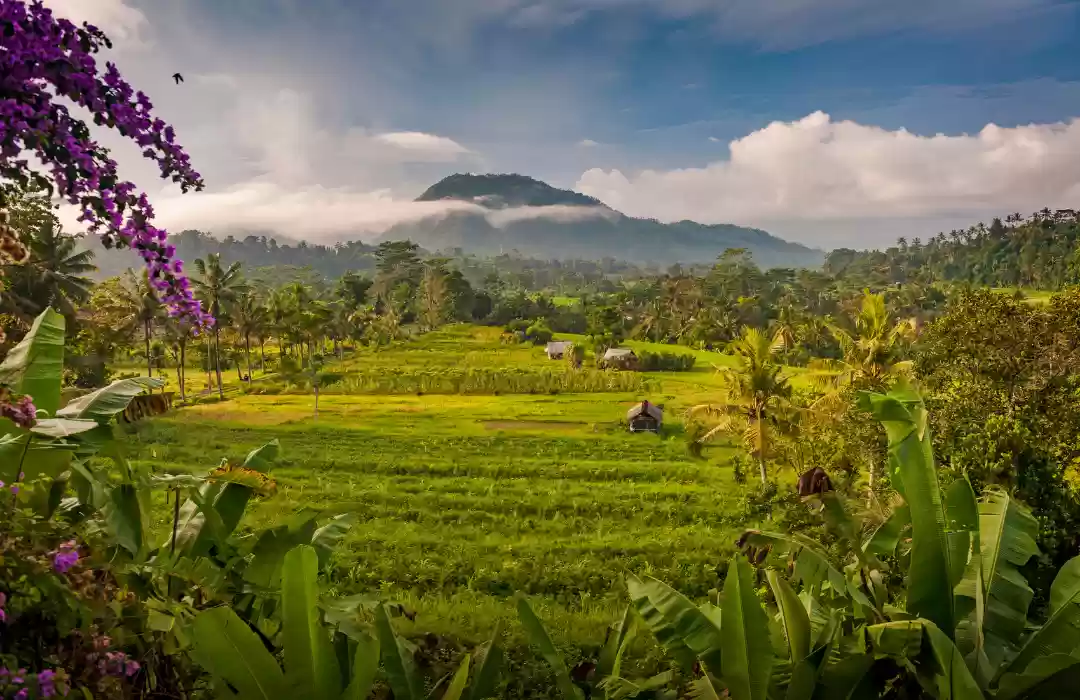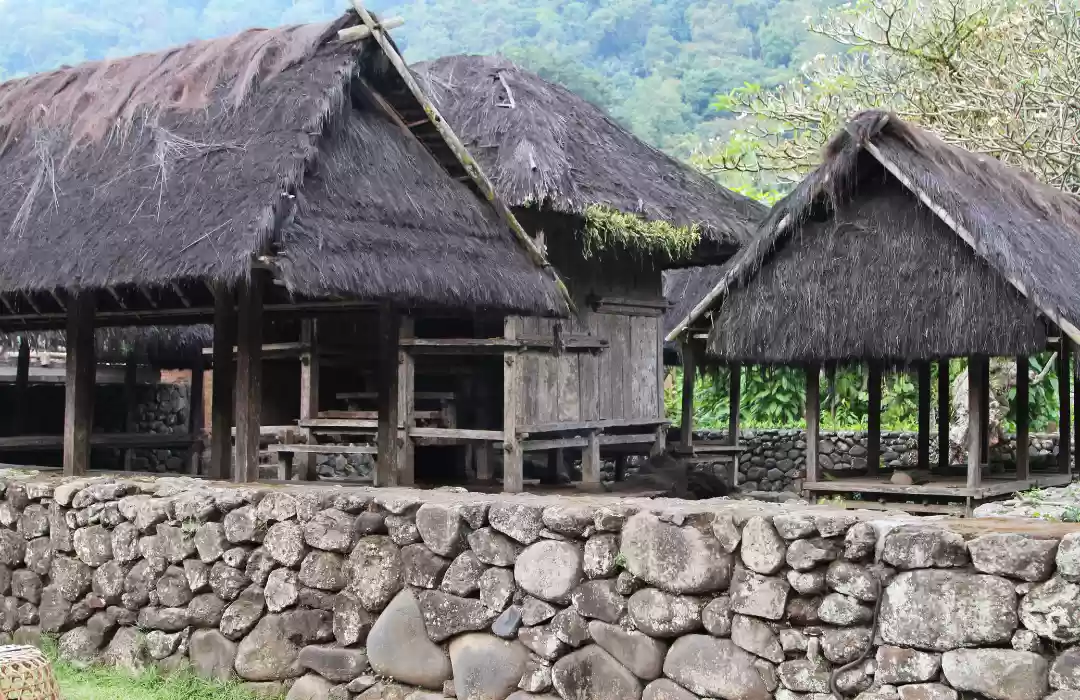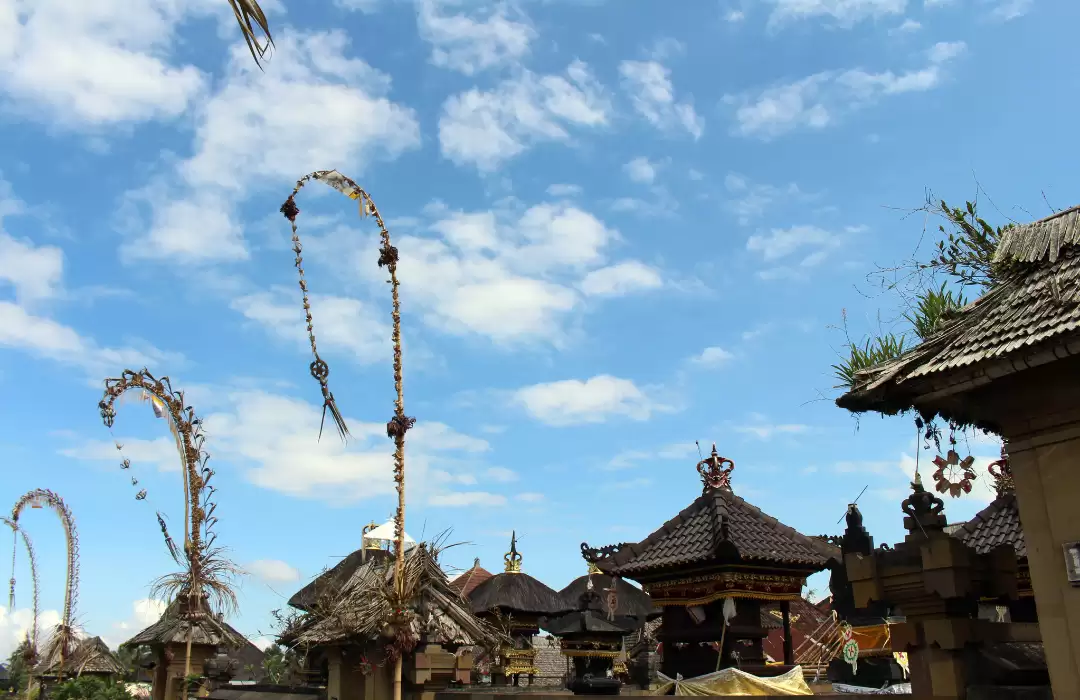How to Experience Bali’s Village Life – A Day with Locals in Traditional Bali Villages

Bali is often thought of as an island of beautiful beaches, lush jungles, and bustling tourist attractions, but the true soul of the island lies in its traditional villages. These villages, scattered across Bali’s highlands and coastal regions, offer a glimpse into the island’s authentic culture, ancient practices, and peaceful lifestyle.
While most visitors flock to the more popular destinations like Ubud, Seminyak, or Canggu, the real magic of Bali can be found in its hidden corners, where locals live in harmony with nature, continuing age-old traditions. By spending a day in these traditional Bali villages, you can immerse yourself in the island’s culture, learn about local crafts, experience agricultural practices, and witness the timeless rituals that define Bali’s rich heritage.
In this guide, we’ll show you how to experience Bali’s village life by taking you to some of the most authentic villages, where you can engage with the locals, participate in cultural activities, and gain a deeper understanding of Bali’s way of life. Whether you're visiting for the day or planning a longer stay, this experience will leave you with cherished memories and a deeper connection to Bali.
1. Ubud’s Villages – The Cultural Heart of Bali

One of Bali’s most famous regions is Ubud, known for its arts, yoga culture, and beautiful rice terraces. However, beyond its art galleries and luxury resorts, Ubud is surrounded by a network of traditional villages that remain untouched by the crowds. These villages offer a rare opportunity to witness authentic Balinese life.
Tegallalang Village – Bali’s Iconic Rice Terraces
When in Ubud, a visit to Tegallalang Village is a must. Famous for its stunning rice terraces, Tegallalang offers an opportunity to witness the island’s traditional agriculture practices up close. As you walk through the lush green terraces, you’ll see local farmers working the land in the same way their ancestors did. Many farmers still rely on subak, the traditional Balinese system of water management, which has been recognized as a UNESCO World Heritage.
Tegallalang is also home to artisans who practice traditional wood carving, painting, and crafts, which you can see being made in the village. Visiting these artisans allows you to learn about Bali’s traditional art forms and perhaps take home a unique souvenir as a memory of your experience.
Local Tip: Take a guided tour of the rice terraces to learn about the unique agricultural practices that make Bali’s farming culture so special.
2. Sidemen Village – Bali’s Hidden Paradise for Cultural Immersion

Located in the east of Bali, Sidemen Village is a hidden gem that offers visitors a more authentic, rural experience. This picturesque village is nestled in the shadow of Mount Agung and is known for its traditional Balinese culture, stunning landscapes, and peaceful vibe. Sidemen has become a popular spot for those who want to escape the crowds and experience a slow, rural lifestyle.
Sidemen is also known for its silk weaving and traditional crafts, making it a fantastic place for those interested in learning more about Bali’s handicrafts. Many of the villagers still practice traditional weaving methods passed down through generations. Visitors can watch weavers at work, see how the silk is made, and even try their hand at creating their own woven fabric.
In addition to its arts and crafts, Sidemen is a great place to explore nature. You can hike through the lush landscapes, visit nearby waterfalls, or simply relax in one of the local eco-lodges, surrounded by rice fields and mountain views. The peaceful environment of Sidemen makes it one of Bali’s best spots for those seeking to reconnect with nature.
Local Tip: Don’t miss the opportunity to join a traditional cooking class in Sidemen, where you can learn how to make Balinese dishes using locally sourced ingredients.
3. Bali Aga Village – A Step Back in Time to Ancient Bali

For those interested in Bali’s ancient traditions, a visit to a Bali Aga village is a must. The Bali Aga people are the island’s original inhabitants, and their villages, such as Trunyan and Pura Lempuyang, offer an immersive experience into pre-Hindu Balinese culture.
One of the most fascinating aspects of Bali Aga villages is their unique architecture and spiritual practices. The houses in these villages are built in a distinct style, often featuring thatched roofs and natural materials. In Trunyan, the dead are not cremated as in other parts of Bali, but placed in open-air graves, which is a fascinating and cultural aspect of the village’s traditions.
Visiting Bali Aga villages allows you to experience the authentic spirituality of Bali and engage with locals who still practice the island’s ancient customs. You can learn about their ceremonial rituals, explore historical sites, and see how the Bali Aga people live in harmony with nature.
Local Tip: If you’re interested in Bali’s traditional architecture, consider visiting the Pura Lempuyang Temple, a sacred mountain temple with stunning views and a deep spiritual significance.
4. Penglipuran Village – Preserving Bali’s Culture and Traditions

Located in the Bangli region, Penglipuran Village is one of Bali’s most well-preserved traditional villages. The village is known for its cleanliness, natural beauty, and strong commitment to preserving Balinese culture. Penglipuran has maintained its traditional village layout, which has remained unchanged for centuries, making it one of the best places to experience authentic village life.
What sets Penglipuran Village apart is its strong community spirit. The villagers have maintained their cultural practices, such as balinese dances, offerings, and traditional music, while also incorporating modern elements into their everyday lives. The village is organized with a strong sense of order, with houses lined up along wide, neat pathways, creating a beautiful harmony between nature and tradition.
Penglipuran is also known for its bamboo forest, which adds a serene and peaceful ambiance to the village. Visitors can walk through the forest, enjoy the fresh air, and connect with nature in a truly unique setting.
Local Tip: If you visit Penglipuran Village, be sure to spend time talking to the local villagers and learn about the village’s history, its commitment to sustainability, and how it continues to preserve Bali’s cultural heritage.
5. Bali’s Village Temples – A Spiritual Experience with the Locals

Bali’s village temples offer a truly authentic experience for those interested in spirituality and culture. Unlike the more famous temples like Tanah Lot or Uluwatu, Bali’s village temples are often more intimate and offer an opportunity to experience local rituals and ceremonies that have been practiced for generations.
Visiting a village temple provides an opportunity to engage in Balinese Hindu traditions, from offering flowers to participating in prayers and witnessing temple festivals. The island’s temples are a focal point of community life, and visitors are often welcomed to observe, join in the rituals, and learn about the island’s deeply spiritual culture.
Some of Bali’s most beautiful village temples are located in remote areas, surrounded by nature and lush landscapes, creating the perfect setting for spiritual reflection. These temples also offer peaceful sanctuaries for meditation, helping you connect with the island’s energy and find a sense of inner peace.
Local Tip: If you’re visiting a temple during a local festival, be sure to dress modestly, bring a sarong, and ask the locals if there are any ceremonial practices you can join.
Connecting with Bali’s Heart – A Unique Village Experience
Experiencing Bali’s village life is one of the most authentic and enriching ways to connect with the island’s culture, traditions, and people. From learning about traditional Balinese crafts in Sidemen to witnessing ancient rituals in Bali Aga villages, these villages offer a unique and immersive experience for travelers looking to go beyond the typical tourist destinations.
By spending time in these traditional villages, you’ll gain a deeper appreciation for Bali’s cultural heritage, the spirituality that drives the island’s way of life, and the sustainable practices that locals maintain to protect their environment. Whether it’s learning about local agriculture, enjoying a traditional meal, or simply walking through the peaceful rice terraces, Bali’s villages offer an unforgettable experience that will stay with you long after you leave.
So, the next time you visit Bali, step off the beaten path, visit its traditional villages, and immerse yourself in the island’s authentic culture for a truly memorable experience.










